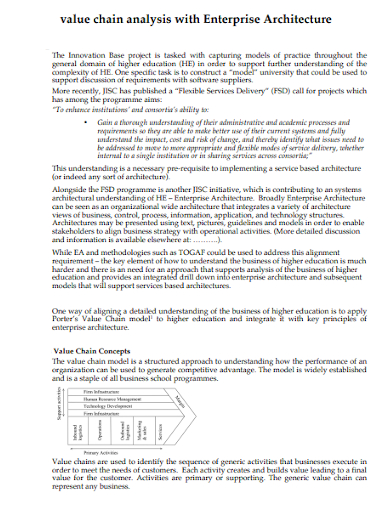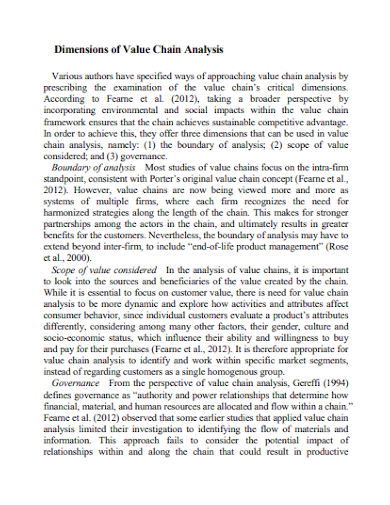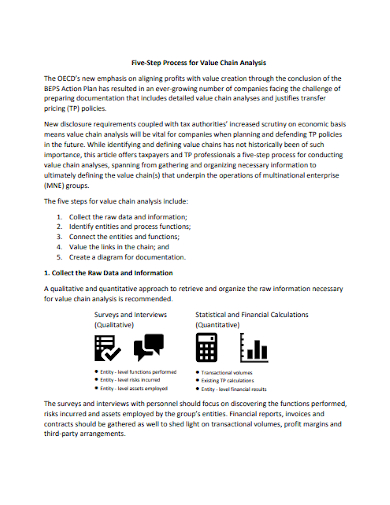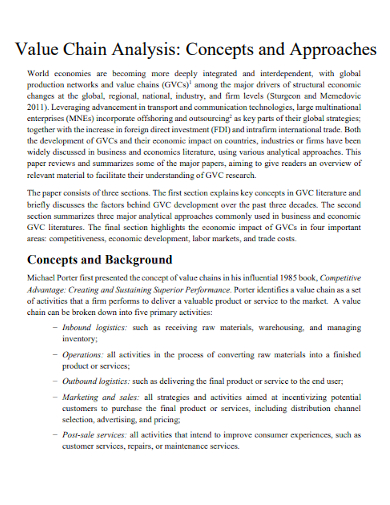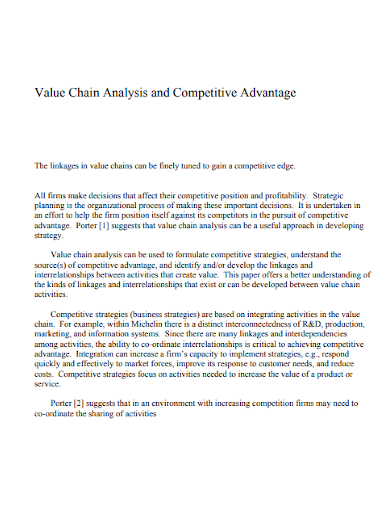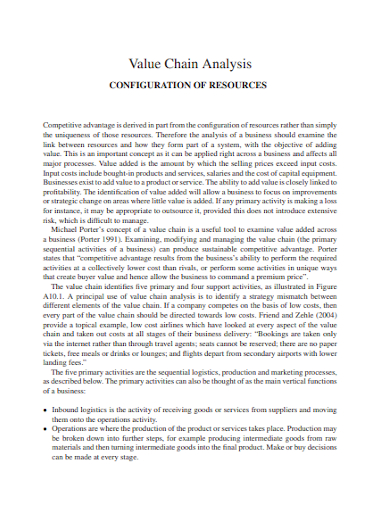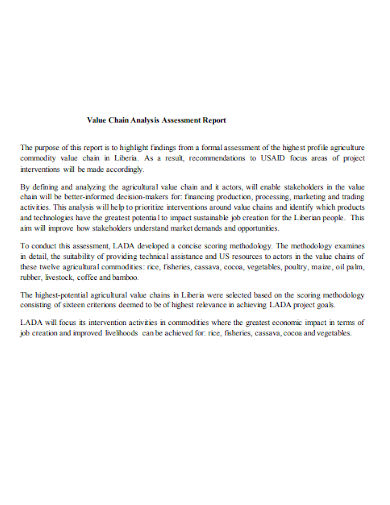The phrase “value chain” refers to all of the commercial activities and procedures that go into making a product or providing a service. A value chain can span various stages of a product’s lifecycle, from research and development through sales and all in between. In his book The Competitive Advantage: Creating and Sustaining Superior Performance, Harvard Business School Professor Michael Porter developed the notion. Taking inventory of the operations that make up your company’s value chain will give you a better understanding of what goes into each transaction. Your organization can be better positioned to share more value with consumers while capturing a larger portion of the value created at each point in the chain by maximizing the value created at each point in the chain.
10+ Value Chain Analysis Samples
Why do certain businesses’ profit margins outperform their peers? How can a business get a competitive advantage over its competitors? Value chain analysis can provide solutions to these problems. The process of looking at the actions that go into turning the inputs for a product or service into an output that is appreciated by the customer is known as value chain analysis. Companies undertake value-chain analyses by examining each production step involved in the creation of a product and suggesting methods to improve the chain’s efficiency.
1. Value Chain Analysis Template
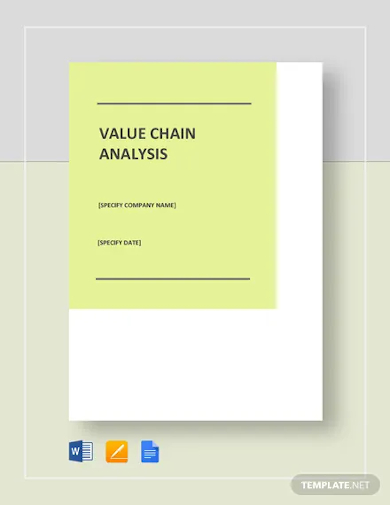
2. Value Chain Analysis with Enterprise Architecture
3. Dimensions of Value Chain Analysis
4. Five-Step Process for Value Chain Analysis
5. Value Chain Analysis Concepts and Approaches
6. Value Chain Analysis and Competitive Advantage
7. Value Chain Analysis Configuration of Resources
8. Sample Value Chain Analysis
9. Value Chain Analysis of Strategic Sectors
10. Packaging Value Chain Analysis
11. Value Chain Analysis Assessment Report
Conducting a Value Chain Analysis
- Identify value chain activities – Understanding all of the main and secondary actions that go into the creation of your product or service is the first step in doing a value chain analysis. If your organization sells a variety of items or services, this procedure should be followed for each one.
- Determine the cost and value of activities – After identifying the major and secondary operations, the next step is to assess the value that each activity brings to the process, as well as the associated expenses. When considering the value provided by activities, consider how each contributes to the end user’s happiness or enjoyment. How does it add value to my company? Similarly, knowing the expenses associated with each step in the process is critical. Depending on your circumstances, you may discover that cutting costs is a simple method to increase the value of each transaction.
- Identify opportunities of competitive advantage – You may assess your value chain through the lens of whatever competitive advantage you’re seeking to acquire once you’ve compiled it and understand the cost and value associated with each stage. If your primary goal is to lower your company’s costs, for example, you should assess each component of your value chain through the lens of cost reduction. Which steps could be made more productive? Are there any that don’t add much value and could be outsourced or deleted entirely to save money? Similarly, if product differentiation is your primary goal, which portions of your value chain provide the best potential to achieve that goal? Would the added value justify the expenditure of more resources?
FAQs
What does value chain represents?
The value chain represents all of a company’s internal activities that go into producing goods and services. Primary activities that directly contribute value to the final product and support activities that add value indirectly make up VC.
How to improve the value chain?
When a company considers its value chain, it must analyze its value proposition, or what makes it stand out from the competition. The goal of value chain analysis is to increase profits by developing a product or service that is so good that customers are willing to pay more for it than it cost to develop. However, increasing a value chain solely for the sake of improving it should not be the ultimate goal. Instead, a company should consider why it wants to improve its value chain in the context of gaining a competitive edge over its competitors.
Value chain analysis is a powerful tool for understanding and contextualizing your company’s activities, but it’s only one of several tools available. There are a variety of additional frameworks and concepts that can assist you in evaluating organizational performance, developing successful strategies, and increasing your effectiveness in your role.
Related Posts
FREE 10+ Failure Mode and Effects Analysis Samples in PDF
FREE 10+ Make or Buy Analysis Samples in PDF
FREE 10+ Fishbone Root Cause Analysis Samples in PDF
FREE 11+ Cost Volume Profit Analysis Samples & Templates in PDF | MS Word
FREE 6+ Corporate Portfolio Analysis Samples in PDF
FREE 10+ Fault Tree Analysis Samples in PDF
FREE 10+ Comp Analysis Samples in PDF
FREE 10+ Fishbone Analysis Samples in PDF
FREE 10+ Individual Swot Analysis Samples in PDF
FREE 10+ 5 Year Analysis Samples in PDF
FREE 10+ Benefit Costs Analysis Samples in PDF
FREE 10+ Job Hazard Analysis Samples in PDF
FREE 10+ Primary Source Analysis Samples in PDF
FREE 10+ Critical Path Analysis Samples in PDF
FREE 10+ Competition Analysis Samples in PDF

